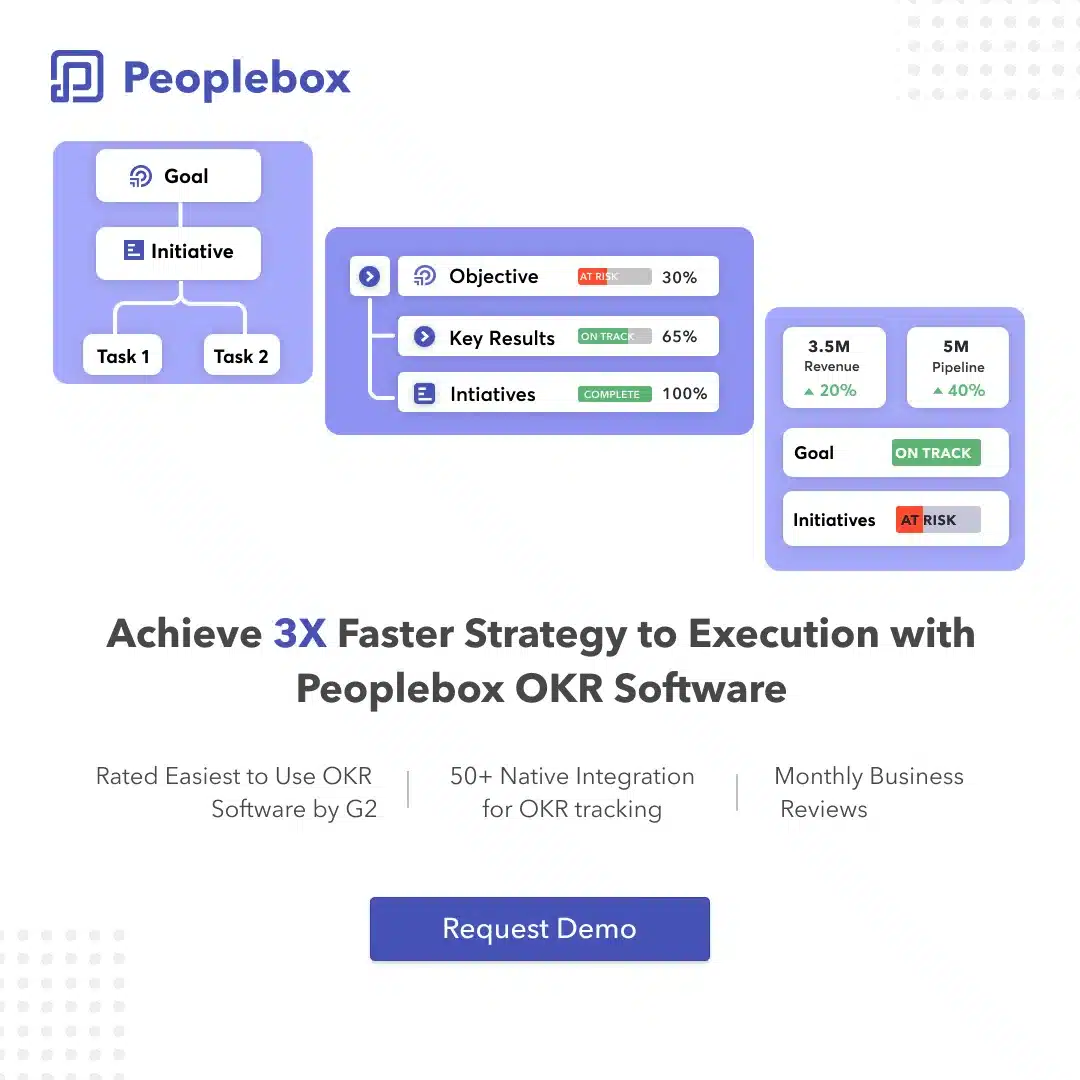Managers are the key stakeholders in an organization’s growth and success. And one on one meetings are among the most powerful tools in their arsenal that can power their teams to success and propel them on the path of growth.
According to a Gallup report, employees who regularly have one on one meetings with their managers are three times more likely to be engaged than those who do not.
Furthermore, one on one meetings foster stronger bonds and productive work relationships.
These meetings also serve as an opportunity for managers like you to hone their coaching skills.
Many forward-thinking organisations are already implementing biweekly one on ones.
However, the one on one meetings, especially the first one with your direct reports, need to be done the right way for them to be truly beneficial for your business.
Your first one on one with an employee should proceed without hiccups. It needs to be a good meeting as it is going to set the tone of your relationship with her.
How do you make this happen?
Preparation is key to having an impactful one on one meeting that runs smoothly from beginning to end.
How to prepare for your first one on one meeting with an employee

Include in your email the purpose of one on one meeting, clearly specifying what the meeting is all about. (Template attached below)
Providing these details is necessary as your direct report may not have heard of or attended a one on one meeting before.
It is recommended that you get your direct report’s input regarding the schedule, length and frequency of the one on ones.
Doing this sends the message that you respect their time and want what’s convenient for them.
Ideally, one on ones should be held every week with each session lasting not less than 30 minutes to an hour.
For new hires, you must have a one-hour session every week.
Lastly, make sure that you prepare an agenda. This is meant to give structure and direction to the meeting as well as ensure that it turns out to be productive.
It should be noted that the agenda needs to be a collaborative effort between you and your direct report.
Remember, a one on one meeting is primarily about your direct reports.
It’s an opportunity for them to share and discuss with you the matters which are important to them.
It is best to use a one on one meeting software that can help in setting one on one meeting agenda collaboratively, allowing both manager and employee to add their talking points before the meeting and come prepared.
Coming to the meeting with a predefined agenda gives direction, and helps both manager and direct report focus on action items.
Since this is your first one on one meeting with the direct report, prepare questions that would allow you to get to know them more, both personally and professionally.
Ask them about their interests outside work, their goals and motivations, kinds of projects they want to work on and how they want to receive feedback, to name but a few.
If you are confused about what to ask them in the first one on one meeting, this ultimate list of more than 500 one on one meeting questions can be a great resource.
What you should do during and after the one on one meeting?
Preparing well for the one on one is just half the battle won. How you conduct the meeting also matters.
Below, we provide some tips on how to conduct your one on ones for maximum impact.
During the one on one meeting

This is not a performance review nor a dry run for a product presentation.
The atmosphere doesn’t have to be formal. In fact, it is best to keep the meeting casual.
Having a relaxing environment encourages the employee to talk freely. It also makes it possible for the conversation to unfold organically.
2 Listen actively
Listen attentively to what your direct report is saying.
Comprehend what she is sharing. If there is something you do not understand, clarify it. Acknowledge her opinions and feelings.
All these are paramount to the success of your one on one meeting.
3 Ask questions
Not all people openly share without being prompted.
There are those who prefer to be asked first. It is important that your questions are well-crafted.
They need to be open-ended but specific to avoid broad or vague answers.
You should ask icebreaker questions which can help your direct report open up with you and put them at ease.
You should also check with them on what’s blocking their progress.
Ask them about the challenges they are facing with regard to their work, team dynamics, learning curve, etc. and guide them on how they can overcome them.
4 Provide and receive feedback
Take this as an opportunity to let your employee know how she is doing so far and what she needs to do moving forward.
Ensure that it is a well-thought-out and personalised feedback.
Encourage your employee to give feedback about you as well.
Please do not interject or react as she talks. Listen and accept her comments.
Giving feedback during one on one meetings is an art you can master only with practice.
5 Take notes
A very big advantage of you taking your own notes during the one on one meeting is that your employees feel assured they are being heard and their words are important.
To effectively track action items, you need to create a seamless system.
Taking notes is the best way to start working on a system of accountability, but they are meaningless if not followed-up with actions.
Use a one on one meeting software that allows you to quickly and easily take notes during the meeting.
6 Wrap it up with assigning action items
To end the meeting, make a quick summary of what has been discussed.
Also, clarify things which are unclear and raise additional matters which were not mentioned.
Propose an action plan for your next one on one.
Lastly, thank your direct report for her time and inputs.
After the one on one meeting
1 Take action
When you take action on the items discussed, you are building an environment of trust and accountability in your team.
It implies that your connection with your team will grow stronger and they will respect you even more.
Actions are the real indicators of progress.
Lack of action can dissolve the very purpose of having the one-on-one meeting, portray you in a very bad light, lower your respect and create an atmosphere of distrust in your team.
2 Follow up
When the meeting ends, and you and your direct report walks out with notes and action items listed down, make sure they are assigned to the respective owner of the task and you regularly follow-up on the progress of the action item.
It is important to follow-up and understand if your team is facing any blockers in implementing the points discussed.
First one on one meeting email template to be sent to your employee
Hi ,
I’d like to let you know that I have decided to have regular one on one meetings with every member of the team. I was thinking of scheduling our first one on one meeting soon.
This exclusive meeting between you and me is a means for me to get to know you more – to listen to your thoughts and ideas about how we can improve the team and better do our jobs. It’s also an opportunity for us to give each other feedback and discuss how we can help each other grow professionally.
I would suggest from 4:00Pm- 4:30PM, but would like to hear your thoughts on the schedule too.
Your inputs are highly valued in this meeting as this meeting is all about you! So, I would like us to write the agenda together.
We’ll be doing this using Peoplebox one on one meeting software – I’ll be sending you the guide on how to access and use it shortly.
I’m really looking forward to starting our one on one’s!
Regards,
(YOUR NAME)

Wrapping up
Your first one on one meeting should make your employee feel heard and valued.
When done right, this meeting can have a profound impact on your team and eventually your company. A one on one meeting is an investment that promises good returns, no matter what.
So, make sure that you, as the manager, are prepared for it and handle it well.







